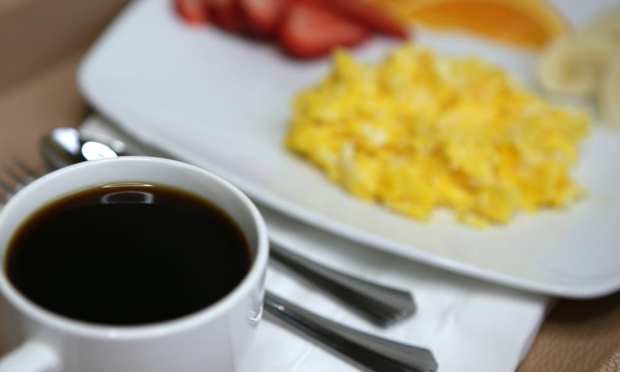How Restaurants Are Working To Bring Breakfast Back

Breakfast, we’ve long been exhorted by mothers everywhere, is the most important meal of the day. And, until very recently, it was also the meal Americans were most likely to eat in the car or on the run, and often on the way to work in the morning. But that was before a global health pandemic shut down offices and breakfast joints nationwide – and daily commuters became office switchers, one of four post-pandemic persona types identified in PYMNTs’ latest consumer survey, referring to the subset of the population that has made the jump from working in an office and working from home.
The relocation of the workforce meant a radical reset of the morning commute. It no longer involved getting in a car and driving somewhere to grab a bite on the way to the office. Instead, the average consumer found that the short walk from their bedroom to their home office left them more than enough time to make their own breakfast before kicking off the workday.
And, in fact, the data demonstrates precisely that.
According to reports in Reuters, the pandemic’s outbreak rapidly pushed consumers into a pantry-stocking mindset. General Mills Inc. reported a spike in demand for its pantry staples starting in early March, as homebound shoppers stocked up on comfort foods during lockdowns.
And General Mills was far from alone. Kellogg’s, Post Consumer Brands and Quaker Oats all reported similar sales surges when restaurants closed around the world, forcing people to eat at home.
This is one of the few items we can positively identify as a wholly new trend brought on by COVID-19: All four of those mega-cereal brands had seen their sales sliding for the last several years, as consumers began eating out or looking to challenger brands as healthier alternatives.
“In March, the company experienced an unprecedented increase in consumer demand for food at home,” General Mills said in a statement earlier this year. “While the magnitude of … demand moderated in April, it remained significantly elevated compared to pre-COVID-19 levels.”
The expansion of sales, according to Miguel Patricio, CEO of Kraft Mac & Cheese-maker Kraft Heinz, is due to more than consumers merely being at home and available to eat breakfast. The bigger picture in this case, he said, is about trust in times of uncertainty. When concerned about their health and the risk of being exposed to a novel virus, consumers will generally tend to rush back to what they know.
“In times of uncertainty, consumers turn to brands that they trust. They want to experiment less,” Patricio told Reuters. “That’s what we’re seeing right now.”
And that return to the comfort and familiarity of home is proving to be a bit of a problem for restaurants amid the grand reopening. Consumers want to eat out again, PYMNTS data demonstrates – among the reasons to get back out into the world, the desire to eat out trails only the desire to see friends and family.
But what people want to do and what they are willing to actually do can be different things. And PYMNTS’ recent data also indicates that a majority of consumers now believe the pandemic will last until February of next year, and that the longer they stay in, the more committed they will be to continuing their digital habits.
Some eateries have been able to counterbalance that reluctance to eat out with the desire to eat restaurant-prepared food by beefing up their order-ahead and curbside pickup capabilities. But for companies that specialize in breakfast, that option doesn’t work so well, as many popular breakfast items simply don’t keep well enough to work as carryout food. Fresh waffles are delicious, but soggy ones are decidedly not.
So how to bring breakfast back when carryout doesn’t work nearly so well and homebound workers are turning to the trusted cereal brands of their childhoods? It seems some brands are thinking about adding incentives that they hope will inspire consumers to venture out to eat.
Panera, for example, is giving away coffee for the rest of the summer with its subscription service. Any customer who signs up for the service before July 4 will be able to grab any size hot coffee, iced coffee or hot tea when ordering at Panera bakery-cafes, online or via the Panera app. Guests will be allowed to redeem the offer once every two hours with unlimited refills, according to the company.
And now, the monthly $8.99 subscription fee will be paused through the end of the summer. To build buzz for the idea, Panera polled its consumers via social media to glean their enthusiasm for the free coffee promotion.
“Do you want free unlimited premium all summer? 50,000 votes for YES by 6/22 and it’s yours, America. #FREECOFFEE4SUMMER,” Panera said via Twitter.
Unsurprisingly, the vote was for an overwhelming yes – and the company garnered over 50,000 new subscriptions.
“This is by far the single greatest increase in subscriptions we have seen in the history of Panera,” said Chief Brand and Concept Officer Eduardo Luz.
And if those customers decide they need a muffin or a breakfast sandwich once they’ve claimed their free coffee? All the better for the cause of getting people to start eating breakfast at restaurants again.
Will this be the beginning of using cleverly placed subscriptions to bring consumers back into the breakfast fold? Will Waffle House let their enthusiasts get an allotted number of subscription waffles per month? Will there ever be a world where Starbucks is giving away coffee every two hours?
Probably not, but what Panera does demonstrate is that if consumers are going to eat out again, they will likely need a bit of extra incentive to push them out the door. Otherwise, they’ll likely stick to the safety of their Cheerios.
